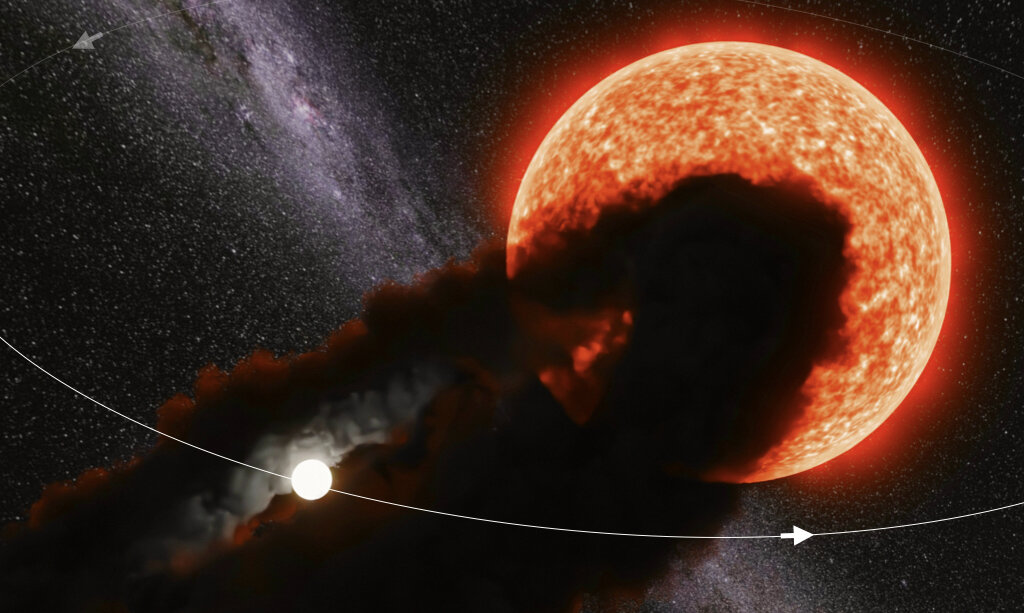One of the stars, which was studied by the Gaia space telescope, suddenly began to increase its brightness. Scientists came to the conclusion that for seven years it was overshadowed by a very sloworbiting companion surrounded by dust.

Eclipse is seven years long
Scientists from the University of Washington were looking for unusual stars in the releases of the Gaia space telescope. They noticed one of them called Gaia17bpp. Over the past 2.5 years, it has increased its brightness by 45,000 times.
There would be nothing surprising in such behavior if it were a star that was preparing to turn into a supernova. However, Gaia17bpp is inside its life cycle and such dynamics look very strange. However, it is impossible to explain it using only Gaia data, because the telescope has been observing the sky only since 2014.
In order to understand what is happening, the researchers turned to other sources — data from the Pan-STARRS1, WISE/NEOWISE and Zwicky Transient Facility missions. They have also been watching Gaia17bpp since 2010.
It turned out that at the beginning of these observations, this star had the same luminosity as now. Then in 2012 it began to dim and this decrease in brightness continued until 2019. That is, we are talking about some extremely long eclipse of seven years in length, the end of which Gaia has seen.
Eclipsed Star
Scientists have an idea that could reduce the light of a star for seven years. Most likely, Gaia17bpp is an eclipsed star. That is, in addition to the main component, which we observe, there is also a much smaller companion star, which is surrounded by a dense cloud of dust. From time to time, it closes the central luminary from us, which is why it dims.
Such systems are quite rare, but they ‘ve been known for a very long time. An example here could be Algol or Epsilon Aurigae. Eclipses in this system occur every 27 years. However, they last only a few months.
Scientists turned to the archives. The star, which is known to them as Gaia17bpp, has been present on photographic plates from ground-based observatories for 66 years. However, during this time, no changes in its brightness were observed. And this allows scientists to finally solve the mystery.
Gaia17bpp is an eclipsed system with a very long orbit period. The components are located at a great distance from each other. Most likely, it is much larger than between the Sun and Pluto.
The period of orbit is forty years, possibly more than a thousand. The speed of the companion in orbit is very small. That’s why the eclipse lasted seven years. But the gap between them is extremely large, so astronomers will be able to observe it for the second time in many generations.
According to phys.org
Follow us on Twitter to get the most interesting space news in time
https://twitter.com/ust_magazine

